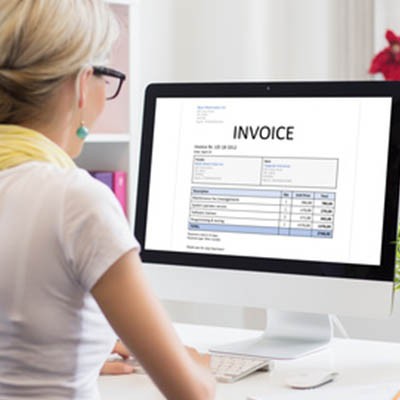Directive Blogs
Tip of the Week: How to Better Manage Your Invoices
It doesn’t matter how good of a service your business provides or how incredible your customer service standards are if your business is lousy at ensuring that payments are received and processed properly. Invoices are an invaluable tool to help ensure your payments due are coming in efficiently. For this week’s tip, we’re examining how to leverage them better.
Developing an Invoice
The first step to better leveraging your invoice is having a better invoice to leverage. When it comes to creating an invoice from scratch, Microsoft Office’s Excel and Word have templates to assist you, and there are also integration that help G Suite users. Otherwise, there are plenty of other software titles available to you that may better fit your business’ particular requirements.
Once you have your software, you can create your invoice document. You should make sure to include the following information on each:
- Description - When you demand money from people, they will naturally want to know what they are paying for. This means that you need to include a detailed summary of why they are being charged what they are, especially if it is for the time spent rendering a particular service or another. By including the order number, the total amount owed, the accepted payment methods, and the payment due date in addition to a comprehensive description of your services, you can often avoid pushback.
- Schedules and Policies - Fair is fair. You were beholden to a certain timeframe to deliver your service, so it only makes sense that your client returns the same courtesy. By establishing and upholding a set payment schedule, your clients will find themselves becoming accustomed to paying you on time. By clearly laying out your policies about discounts, due dates, and late payments and the fines they incur, you can establish an understanding with your client, and if necessary, support your position when demanding payments be made.
- Discount Details - Any and all discounts that you offer should be clearly marked as such on all invoices. This is especially true for those clients who are brand new to your services. Let’s face it, you wouldn’t want to create a false impression of the cost of your services, just to incur the wrath of someone who budgeted incorrectly and did not expect their costs to increase.
Naturally, this is not a comprehensive list of what your invoices should include - these are just the especially crucial bits. There are far more possibilities of what you could add, and the white space on the invoice is too valuable of an opportunity to let go unfilled. Try adding some personalization for each client based on what they are being billed for. Suggesting their next steps both proves your competence as a provider, and gives them a little more value for their money’s worth.
You could also personalize it by adding a thank-you message to the invoice. A short message expressing your appreciation for their business can go a long way - not only does it allow you to show your gratitude to your client, this gratitude may help nudge your client into paying you sooner and coming back to you again and again.
Getting Your Invoice to Your Clients
A good-looking invoice helps, but to really encourage your clients to settle their bills with you, they need to be sent a certain way as well. Part of this is being sure to send them promptly.
It isn’t uncommon for an invoice to go unpaid for long periods of time. In fact, it was estimated that unpaid invoices totalled well over $800 billion… in January. This is why you don’t want to hesitate in sending out an invoice. You may not get it back for quite a while.
It can help to leverage technology while managing your invoices. Digital invoices are easier to keep track of, as most pieces of invoicing software will keep you updated on your invoice status.
For more assistance with your invoices, make sure you reach out to us at Directive. Give us a call at 607.433.2200, and subscribe to our blog for more useful technology tips and advice!


